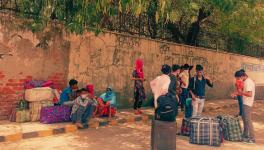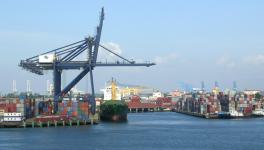Poverty, State Apathy, and Resource Exploitation Afflicts Indian Sunderbans
Hingalgunj: The world-famous mangrove habitat of Sundarbans is situated across four districts of Bangladesh and two districts of West Bengal. It is also the single most significant chunk of mangrove vegetation globally.
At present, the Indian Sundarbans consists of 9,630 sq km, out of which the mangrove area consists of about 4,266.6 sq km. The total number of true mangrove species in the Sundarbans in the Indian part alone stands at 40. This mangrove vegetation can protect the land from soil erosion as they have a unique salt-tolerant mechanism.
On average, 6,000 tonnes of mangrove litter is released in Sundarbans in one calendar year. The decomposed litter acts as a nutrient for many estuarine fish species, prawns, crabs. Thus, Sundarbans is a vital fish cradle.
The Sundarban tidal estuaries, rivers, creeks, and vast wetlands are vital in rural economic setup and supply of protein food to the region's inhabitants. Fish, prawns, and crabs are transported to the local and outside markets.
NewsClick spoke with Budhar Baulia, a fisherman by profession, living in Kalitala in Sundarbans. “There are lakhs of people who depend on Sundarban fishery, and many fall prey to tiger attacks while collecting shrimp seeds. Big capital oriented farms have now entered the area and are polluting the river ecosystem by discharging the untreated polluted fishery water inside the canals and rivers present in the area,” he informed.
On the other hand, the rampant capture of gravid, shrimp and mud crab and exporting the same to foreign markets also have the adverse effect of depleting the natural stock of these species. These mud crabs use the mud holes in the mangrove forest floor and play an essential role in protecting the ecosystem.
But due to the high demand for mud crabs in the international market, the exploitation of these species is now hampering the natural balance. Until now, no artificial cultural practices or culturing of mud crabs have been done in the Sundarbans.
Another problem is netting the entire sides of riversides with nets of 2 to 3 km, whereby fish seedlings and juvenile fishes fall trapped within the fishnet. This has resulted in indiscriminate fish netting. Debasish Barman, secretary of the Paschim Banga Matsajiby Samity, affiliated under All India Fisherman and Fish Workers Federation, told NewsClick that “neither the Central and the State government is interested in applying the framed rules in the area or creating awareness amongst the fisherman community in the Sundarbans. Social welfare schemes like MGNREGA are practically scarce in the fisherman inhabited areas. He also urged the State government to build up honey collecting cooperatives which will supply processed honey to the foreign and national market,” he added.
“There are no fish processing units being run by the government in these areas distinctively marked by extreme poverty. The other demands of the samity are that the government must take the initiative in net making and repairing factory, ice factory, boat making yards, small retail markets in the Deepanchals of the Sundarbans, and creation of a huge number of fisherman and fish vendors cooperative society with facilities of cheap institutional credit for both marine and inland fishers,” he added.
Interestingly, due to silting of the significant rivers of Sundarbans like the Raimangal and Kalindi, the situation of the river bed is also alarming, causing frequent floods and overflow of estuarine rivers and damages to human settlements happens frequently. Crops are destroyed during full moon nights due to this.
In various areas of the Sundarban, due to regular flooding, tilled crops are often submerged by the river, and after the water subsides, fields become barren. Irrigation facility is absent in the Sundarban, where sweet water availability is between 700 to 800 feet.
Sundarban is also regarded as the cyclone capital of the country, and in the last few centuries, more than 90 severe cyclones have caused catastrophic damages to human settlements of the region, often causing grave harm to wildlife as well. One of the reasons for the cyclones is the incapability of the mangroves to stall the progress of the weather disturbance, after over 5,000 sq km of mangrove forest were cleared in the last two centuries.
During the 1951 Census, the population of Sundarbans was about 12 lakh. In the 2011 Census, it has risen to 42 lakhs. Most of the population is of marginal economic status.
Get the latest reports & analysis with people's perspective on Protests, movements & deep analytical videos, discussions of the current affairs in your Telegram app. Subscribe to NewsClick's Telegram channel & get Real-Time updates on stories, as they get published on our website.
























